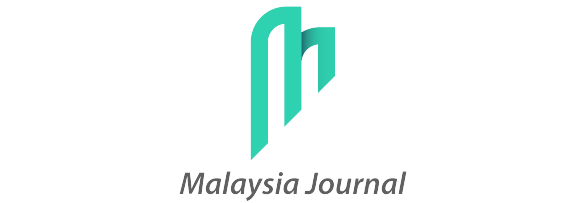
Dr Latif Lai
A quarter of the population eligible for Covid-19 vaccination in Malaysia have registered via the MySejahtera platform as at March 21, the government has reported. This figure of 6,155,213 individuals (25.4 per cent) is overall, encouraging.
However, a breakdown of this number to state level shows that attention needs to be given to Sabah.
This state only recorded 277,609 registrations on MySejahtera, or 9.5 per cent of the eligible population, making Sabah the lowest in terms of the number of people who have made their interest in the vaccine official. Why is this the case?
Firstly, is this low registration rate in Sabah contributed by a high number of anti-vaxxers? We can discard this assumption. A survey in December 2020 by the Malaysian Health Ministry involving some 200,000 respondents found the figure of those who fall in the anti-vaxxer or who do not want this vaccine in particular only stands at 16 per cent.
Based on this fact, the assumption that the low percentage who have registered to get this vaccine in Sabah is due to the anti-vaccine group can be rejected.
Secondly, there is a need to ask if there are enough campaigns to explain the importance of registering. The question if there are sufficient or insufficient campaigns is subjective, but looking at government efforts in particular through the Sabah Information Department, it can be assumed there are ample campaigns to explain the registration drive in a move to encourage sign-ups.
For example, the Info On Wheels programme on March 20 was carried out in nine districts in the state. This does not include information shared through both conventional and social media.
The whole-of-Government and whole-of-society approach in the Covid-19 vaccination campaign has also received encouraging response. This can be seen through efforts taken by political parties from the Opposition block to go to the ground and activate their respective party machineries to register as many people as possible for the vaccine inoculation exercise.
At a glance, the above scenarios should see the number of registrations for Covid-19 vaccine inoculation increase among the Sabah population. However, in reality, this is not the case. When scrutinizing the two scenarios, answers to basic questions such as who should register, how this should be done, what needs to be done and where registration can take place, have been answered. In short, there are answers to the who, how, what and where questions. The void is in the why element which does not have a clear answer yet.
Taking from a real case scenario between this writer and a Grab driver has strengthened the above assumption — that campaigns to encourage more people to register as recipients do not come with sufficient explanation on why the population needs to register for the vaccine.
In this conversation, I asked the Grab driver if he had registered to receive the Covid-19 vaccine, and the answer was he had yet to do so. The driver wants to register for the vaccine but does not see the need for WHY he should register early, as he will only receive the vaccine in some months to come.
There is, in my opinion, some truth to the explanation given by the Grab driver. This may be an isolated individual case, but I am sure there are many others out there who have the same assumption. In other words, the government needs to come up with convincing answers on why individuals who are eligible for the vaccine need to get themselves registered. We are confident that the government has its own justifications on why registration needs to be done, however, in communicating this to the rakyat, these justifications are not stressed on enough.
In my conversation with the Grab driver, I tried to stir his interest by stating that the government needs the public to register earlier as it would help them in managing logistics matters.
Citing an example, I shared that if 1,000 people register in the Kolombong area and the nearest vaccination centre is the Inanam Health Clinic, then this same number of vaccine doses would be sent there. This will help with storage, ensuring there are qualified health staff to manage the inoculation, and to avoid wastage. Although I am unsure if this is one of the justifications of the government, the Grab driver finally understood WHY he needs to register early.
He responded that if the government provided information on WHY one must register for the vaccine, the same why it explained WHY the Malaysian Population and Housing Census needs to be done, it would be easier for the people to understand and provide support. In short, there is a need to explain WHY one should register early for the vaccine.
Another reason, which is perhaps of higher priority in answering why the registration rate to receive the Covid-19 vaccine in Sabah through the MySejahtera application is low, is the Internet penetration rate. A 2019 survey by the Malaysian Communication and Multimedia Commission showed that Sabah had the lowest Internet broadband penetration in Malaysia. This could be one of the reasons for low registration rates in Sabah for the vaccine. The now popular story of student Veveonah Mosibin, who went to great lengths to find a signal to sit for her examinations online when the pandemic hit, is a manifestation of the Commission’s findings.
To overcome the challenge brought on by the low Internet penetration rate in Sabah, it is highly likely the government will activate its machinery to register more members of the population to get next in line to receive their vaccination. This is the time for institutions such as Village Security and Development Committees, the Parents-Teachers Association and committees of places of worship in locations where Internet reach is a problem to be empowered to register villagers and communities in Sabah’s vast rural area.
Face-to-face communication needs to be increased. Technological mediated communication may be effective in urban areas, but would be less so in the interior regions.
To conclude, the problem of low vaccine registration in Sabah is contributed by some weaknesses in the communication system and gaps in the digital technology infrastructure. We are positive that if there are some improvements to these two issues, the registration rate in Sabah to receive the Covid-19 vaccine will increase.
About the writer:
Dr Latif Lai is the Head of the UMS-Unicef Communication for Development (C4D) Research Unit, and Senior Lecturer at the UMS Faculty of Social Sciences and Humanities. C4D is a systematic, planned and evidence-based approach that leads to positive and measurable behavioural and social change. For positive social and behavioural change to happen in development and humanitarian contexts, C4D engages communities, decision makers and any party that could have an impact on the outcomes of a programme.
The post Communicating ‘why’ factor in Sabah vaccination signup appeared first on Borneo Post Online.


